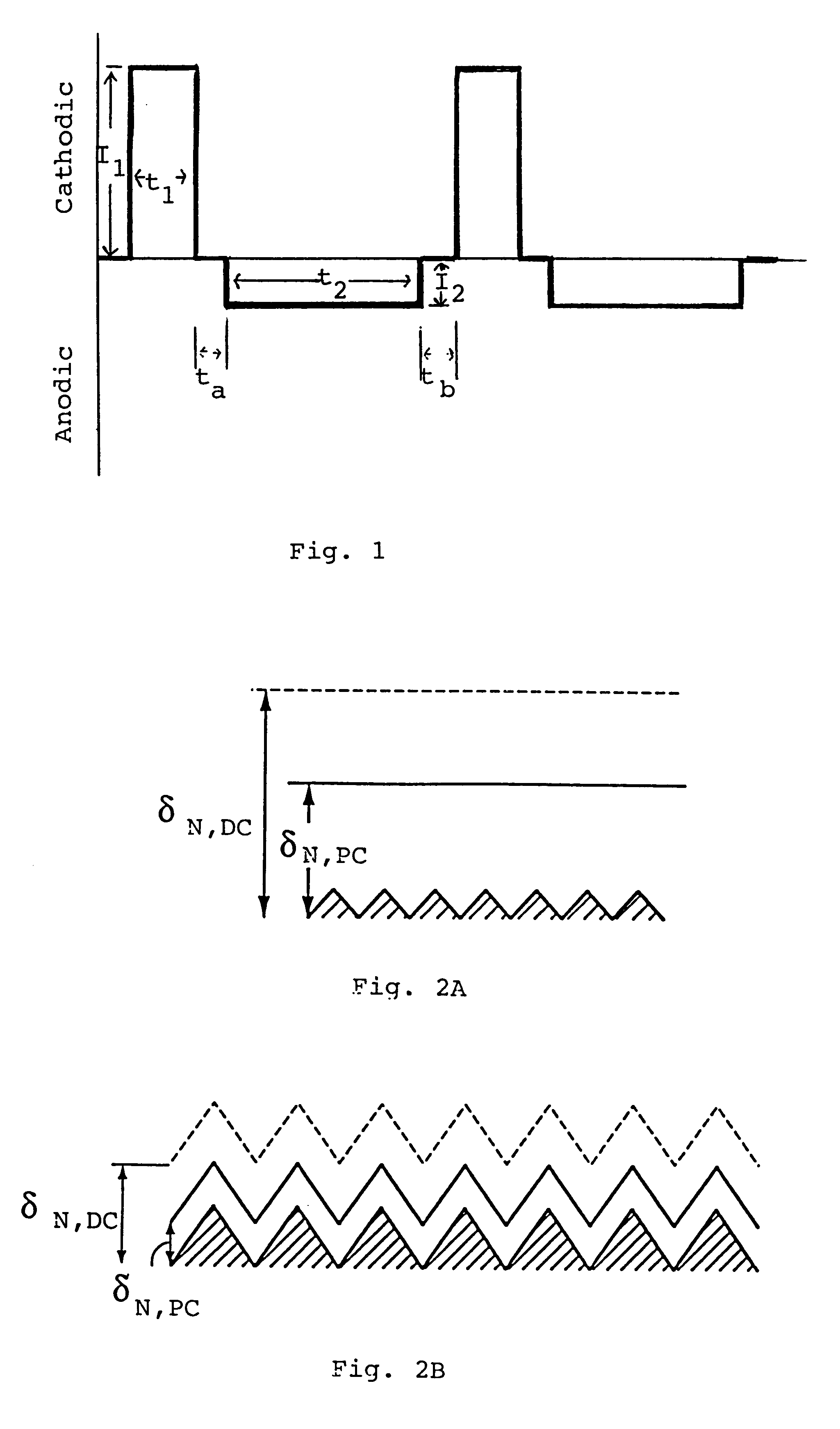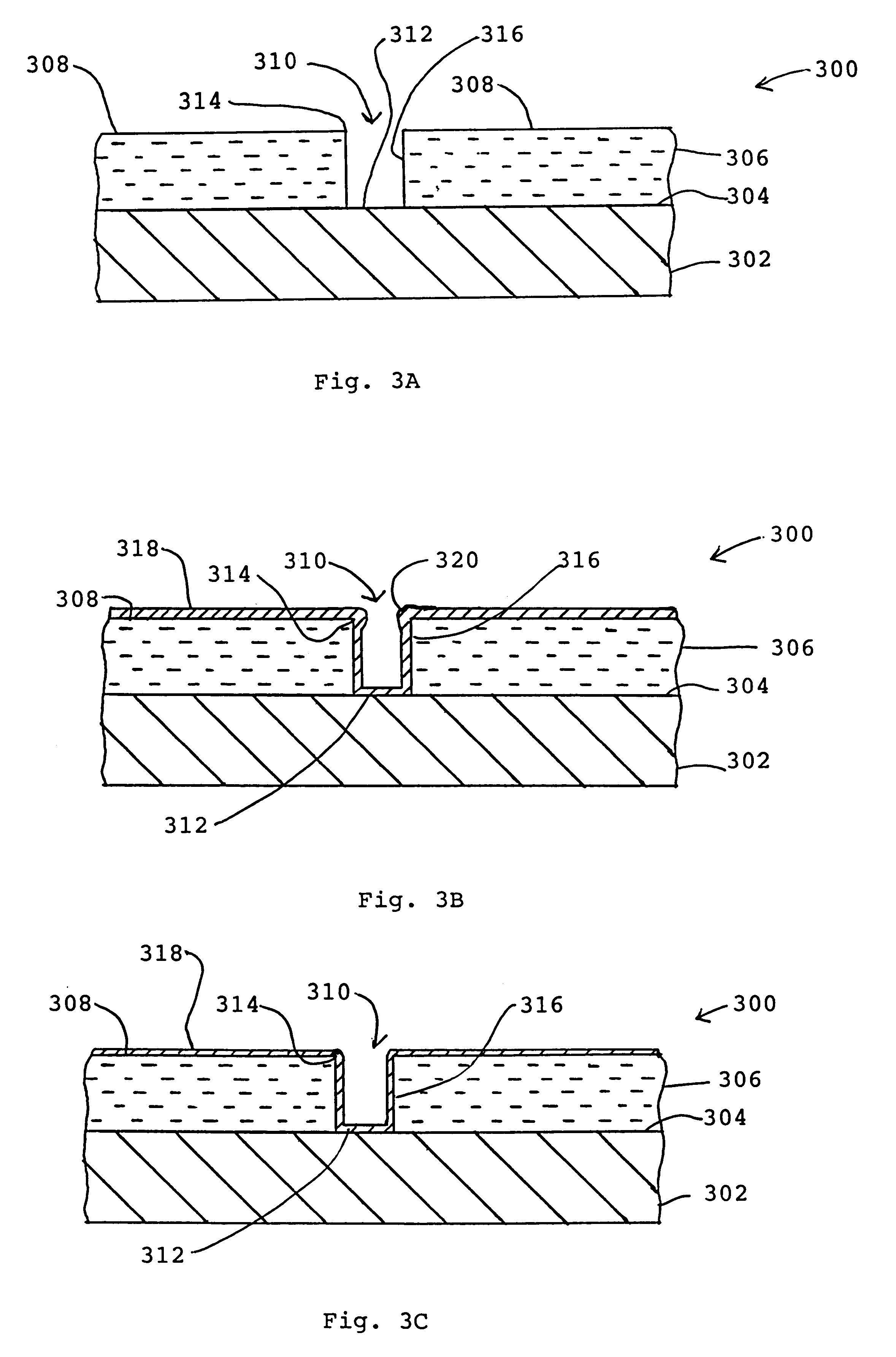Pulse reverse electrodeposition for metallization and planarization of semiconductor substrates
a semiconductor substrate and reverse electrodeposition technology, applied in the field of electrochemical electrochemical electrodeposition, can solve the problems of difficult preparation of difficult to achieve void-free metal difficult to achieve void-free inclusion-free deposits in trenches having high aspect ratios, etc., to achieve the effect of preventing excessive deposition
- Summary
- Abstract
- Description
- Claims
- Application Information
AI Technical Summary
Benefits of technology
Problems solved by technology
Method used
Image
Examples
Embodiment Construction
The distribution of metal electrodeposited on an electrically conductive substrate is determined by the local variations in the electrical current density. The primary current density in an electroplating cell is determined by the geometry of the electrodes. Typically, the primary current density is inversely proportional to the distance between the cathode and the anode along the path that the current follows between the electrodes.
When a voltage is first applied to the electroplating cell, the metal ions in solution in contact with the cathode are deposited on the cathode and the concentration of the ions in the adjacent solution decreases. Consequently, a concentration gradient is established near the cathode, and metal ions accordingly diffuse from the bulk solution region of relatively, high concentration toward the depleted region adjacent to the cathode. This layer of depleted and variable metal ion concentration is the Nernst diffusion layer. In direct-current (DC) electropl...
PUM
| Property | Measurement | Unit |
|---|---|---|
| frequency | aaaaa | aaaaa |
| frequency | aaaaa | aaaaa |
| frequency | aaaaa | aaaaa |
Abstract
Description
Claims
Application Information
 Login to View More
Login to View More - R&D
- Intellectual Property
- Life Sciences
- Materials
- Tech Scout
- Unparalleled Data Quality
- Higher Quality Content
- 60% Fewer Hallucinations
Browse by: Latest US Patents, China's latest patents, Technical Efficacy Thesaurus, Application Domain, Technology Topic, Popular Technical Reports.
© 2025 PatSnap. All rights reserved.Legal|Privacy policy|Modern Slavery Act Transparency Statement|Sitemap|About US| Contact US: help@patsnap.com



